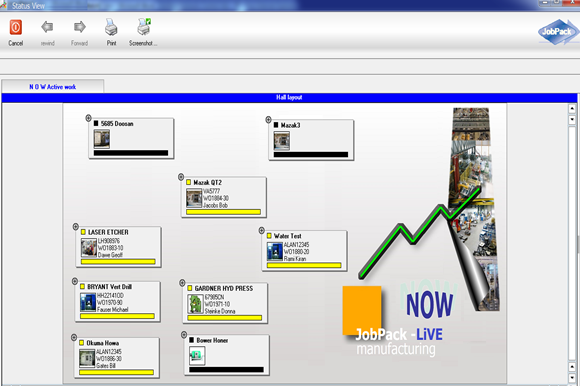7 Ways Manufacturing Scheduling Software Helps Sage 100 ERP Customers
Manufacturing scheduling software is becoming more and more critical as the demand on manufacturing production and delivery continue to rise....
3 min read
John Shepperson Thu, Feb 12, 2015
As a manufacturer, you understand the importance of finding new ways to save time on labor and money on material while increasing productivity. The primary objectives for any business when implementing ERP software (Enterprise Resource Planning system) are to reduce costs and enhance performance. ERP software helps businesses accomplish this with the following capabilities:
Economic realities are making ERP software implementations almost compulsory for every business across all industries. However, manufacturing is one of the sectors that benefit the most from the use of ERP software. This is because ERP software provides manufacturers with tools and functions that make daily work easier, faster, and more accurate.
In a manufacturing environment, the ideal set up of an ERP software system is where business operations are integrated with the manufacturing processes that take place on the shop floor or production line. All too often, the shop floor programmable logic controller (PLC), which is an automated control for plant floor machinery lines is not connected to the ERP system.
The shop floor has numerous entities, devices, and equipment that generate different types of data; it is safe to assume that a big percentage of that data is essential for company management.
Considering the importance of this data to a manufacturer, it’s understandable why combining the two systems would be beneficial. Combining systems, however, is no easy task, and you might be thinking, “Why can’t we just take the data from the PLC directly and avoid the hassle of integrating two systems?”
And the answer is: because the PLCs cannot store data. They collect data and give real-time access to plant-wide information, but they do not keep a record of the data.
Another answer is: because unlike ERP systems, PLC systems can’t convert the data into comprehensive reports relating to production or break the data down into useful information for management, which improves the decision-making process.
Many departments would benefit from integrating ERP software and PLC systems – management and production, of course, but also the maintenance department. The ERP system features a Plant Maintenance module that stores information about various pieces of equipment. The PLC system detects when machines require updating or repair. Combined, this information enables the creation of proactive and preventive maintenance plans. The maintenance schedule for each machine, as defined in the ERP system, would be synchronized with the PLC system’s knowledge of the actual machine condition and operations, keeping the technical staff one step ahead of the possibility of a costly equipment breakdown.
By providing real-time/current information in addition to historical data, integrating an ERP system with a PLC system increases transparency and visibility, enabling company management to make smarter, more informed decisions.
The end-users would also gain a significant advantage from the automated data generation, as it would lessen the amount of time-consuming manual work and lower the possibility of errors.
Integrating ERP systems and PLC systems is essential for businesses because it increases productivity, company profits, and operational efficiency, while decreasing costs and losses – universal goals among companies.
Please contact John Shepperson at 800-320-0210, email john@oatesco.com or visit www.oatesco.com and a member of our ERP software consultant team will help answer any questions you have about this article or your ERP evaluation. For more information about Sage ERP X3, Sage 100 ERP, Sage 500 ERP, Sage CRM and Intacct. We offer a free needs assessment to help you get started.
Oates & Company helps businesses remain competitive in today’s market through the effective use of technology and processes. Oates & Company is a group of former accountants and technology professionals and we’ve walked in your shoes and conquered similar challenges. If you consider your critical business applications a strategic initiative, Oates & Company is here to help.
Another version of this blog was posted on Oates and Company’s Blog on April 1, 2014 - Benefits of Integrating the ERP System with the Shop Floor PLC System

Manufacturing scheduling software is becoming more and more critical as the demand on manufacturing production and delivery continue to rise....

Manufacturing companies understand the importance of communicating, sharing and analysing information in real time in their efforts to improve...

During the first half of 2013, a specialist subcontract machinist company Abundant Manufacturing increased its sales turnover by some 30 percent....